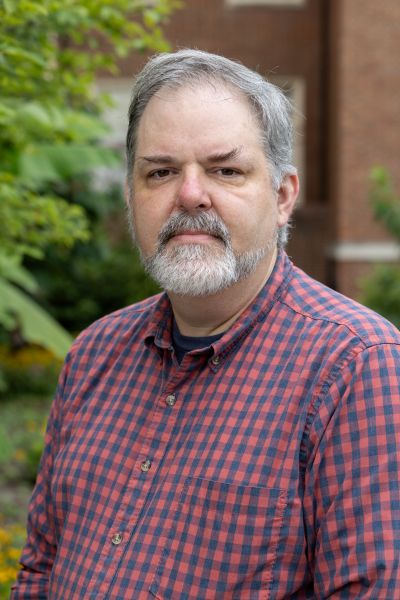Jeb Card
Introduction
Dr. Jeb Card is Associate Teaching Professor of Anthropology. He specializes in Mesoamerican archaeology, the relationship between archaeology and conceptions of the past, historical archaeology, early colonialism, material culture hybridity, ceramic analysis, and pre-Hispanic Maya political history. His field work has predominantly been in Mesoamerica, chiefly in El Salvador, with additional experience in the archaeology of the eastern United States. He received his Ph.D. from Tulane University.
Education
Ph.D., Anthropology, Tulane University
Biography
My research, scholarship, and professional activities are split into three parts: the archaeology of eastern Mesoamerica; three-dimensional documentation and analysis of museum and collection artifacts; and the relationship of archaeology to concepts of time including the role of antiquity in modern esoteric, paranormal, and conspiracy belief communities.
Much of my work as a Mesoamerican archaeologist, including my doctoral dissertation from Tulane University in 2007, has been on the archaeology of El Salvador. My primary work in that region has been on the impact of European invasion and colonization on indigenous Americans and their societies, as seen from early sixteenth-century Ciudad Vieja, El Salvador, one of the best preserved and earliest Spanish colonial archaeological sites. The origins of the modern world lie in this encounter that violently brought together two halves of the planet and radically transformed biology, ecology, economics, and created the structural inequalities that still persist in the twenty-first century. My work has shown that Mesoamericans played a more complicated and vibrant part in both facilitating and resisting the “Spanish Conquest” than has traditionally been believed. The Pipil of El Salvador continued making everyday objects much as they had, while appropriating elements of European style and aesthetics that either appealed to them or made sense to customers for pottery and other goods. An innovation in my work has been a technique of studying such materials that allows for tighter chronological control of early and middle colonial sites and demonstrates how rapidly indigenous craftspeople entered into the global market and design culture. My research also demonstrates that other Mesoamericans from Oaxaca, Mexico, participated as conquistadores allied with the Spaniards and furthering their own interests. Other analysis of ceramics has uncovered evidence of formal and informal cultural centers at Ciudad Vieja including one of the earliest taverns in the Spanish colonies, and the persistence of indigenous religious practice before and after the construction of a colonial church at the site. Altogether, my research at Ciudad Vieja suggests theoretical ties with study of colonial oppression and transformation elsewhere, demonstrating the roots of modern systems of inequality rather than a more traditional “melting pot” model.
I also conduct work on Classic Maya archaeology. I have excavated at Classic and Preclassic sites in Yucatan and El Salvador. Recent work includes research on tobacco flasks from Late Classic El Salvador. In particular I co-authored a study of the first historical record in El Salvador, a seventh-century CE inscribed vessel demonstrating political ties between Tazumal, the largest archaeological site in the country and the major Maya city of Copan, Honduras.
Here at Miami, my work has been managing, with a group of undergraduate students, a large legacy former museum collection with artifacts from around the globe but focused on the Americas. A significant part of this work has been three-dimensional documentation and analysis of artifacts. Along with Miami students, we are building a virtual artifact collection with 3D-scanning and other methods. This is relatively new technology but has become a key part of professional museum and scholarly archaeological work, which is why we have incorporated it into mid- and upper-level archaeology and anthropology courses I teach at Miami.
In addition to this field and lab work, my recent research has been examining the nature and development of archaeology in regards to other popular and influential conceptions of antiquity. This research, including archival research and media analysis, examines how antiquity is the foundational factor of paranormal and belief systems, as well as more established theories of practice in esoteric and magic practitioner communities. Previous work on this topic includes the book Spooky Archaeology: Myth and the Science of the Past, and I am currently working on a follow-up project on the cultural and historical emergence of a “paranormal unified field theory” strongly tied to considerations of antiquity.
